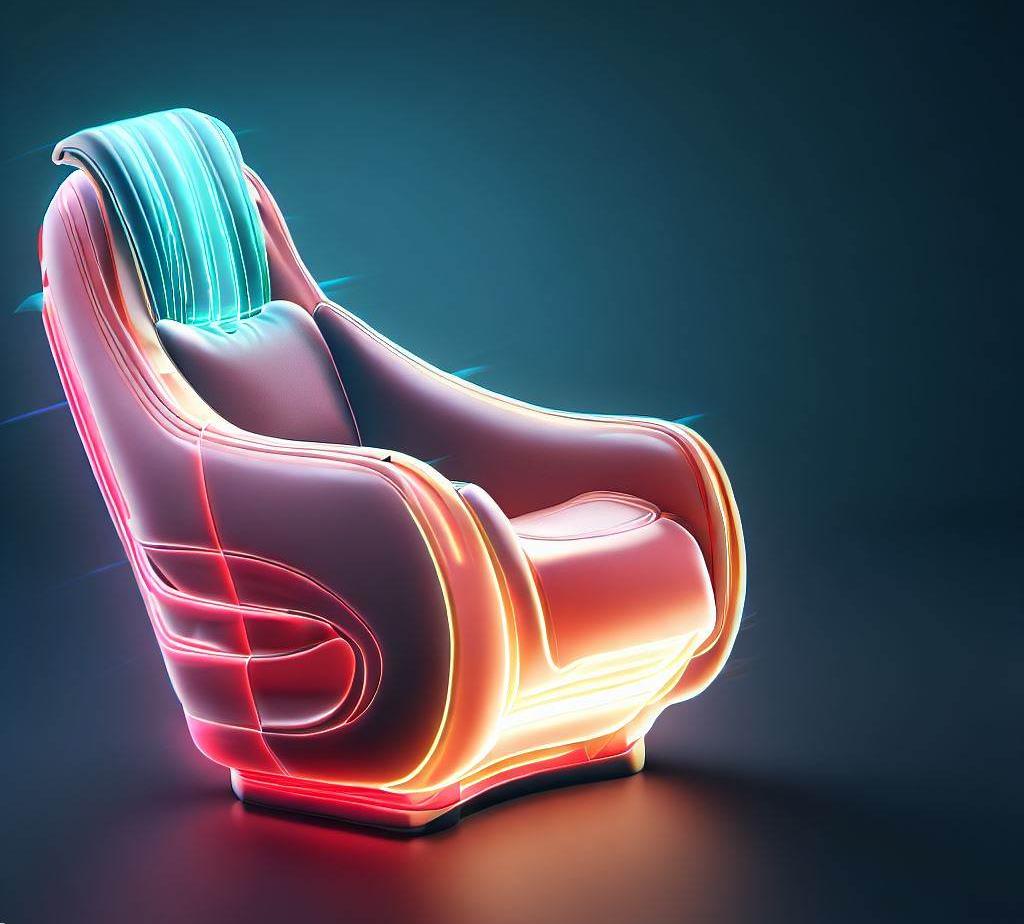Unwrapping the Design Evolution of Massage Chairs

The humble beginnings of massage chairs can be traced back to the early 20th century. These earlier versions were far removed from the sophisticated models we see today. Think of them as the Model T of the massage chair industry. Back then, they were mere chairs with vibratory functions – the epitome of simplicity. From such rudimentary beginnings, the design of massage chairs has continuously evolved, becoming integral parts of our homes and wellness routines. So how exactly has the design of these therapeutic thrones evolved over the decades? Let's dive in and explore.
The Dawn of Massage Chairs
Before we embark on this journey, it's vital to grasp the history of massage and modern chairs. In a nutshell, massage therapy has been a significant part of human history, dating back to ancient cultures. However, the first patent for a mechanical massage chair was granted in the 1950s. This chair was a basic model featuring simple vibratory motions. And while it may have been a luxury then, by today's standards, it would be considered primitive.
The Rise of Shiatsu and Swedish Massage Techniques
In the late 1980s and 1990s, the design of massage chairs underwent a revolution, characterized by the incorporation of different massage techniques in chairs. For instance, manufacturers began to integrate Swedish and Shiatsu massages into chair designs, resulting in a more therapeutic and relaxing experience.
Shiatsu, for instance, is a technique that uses pressure to promote healing and stress relief. The innovation of Shiatsu massage chairs was a significant leap in design. These chairs incorporated rollers and nodes to mimic the kneading and rolling motions characteristic of Shiatsu.
The Integration of Advanced Technology
The turn of the 21st century marked the beginning of significant technological advancements in the world of massage chairs. Manufacturers began to incorporate innovative features like full-body massage capabilities and zero-gravity positioning. One shining example is the Human Touch WholeBody 5.1 Massage Chair, which was designed to address the need for full-body pain relief and relaxation.
Zero gravity was another notable feature that found its way into massage chairs' design. Zero Gravity Massage Chairs, like the Human Touch ZeroG 5.0 Massage Chair, utilize technology originally developed for astronauts. The chair reclines and positions the body in such a way that the user's weight is distributed evenly across the chair, relieving pressure on the body and promoting better circulation.
The 2D, 3D, and 4D Revolution
As technology evolved, so did the range and sophistication of massage chairs. One of the most significant developments in the design evolution of massage chairs was the introduction of 2D, 3D, and 4D massage chairs. This new classification represented the dimensions of movement available in a massage chair's mechanism.
A 2D massage chair, the most common type, has rollers that move up and down and left to right. The 3D models take it a step further, adding a third dimension of movement - in and out - offering a more profound and intense massage. The Osaki OS-4000XT, for instance, is a 3D massage chair renowned for its intelligent technology and versatile massage options.
The 4D massage chairs are the latest innovation, offering another level of control and customization. They not only move up and down, left and right, and in and out, but they also allow the user to control the speed of the in-and-out motion.
The Smart Massage Chair Era
Today, the design evolution of massage chairs has culminated in the creation of smart massage chairs that can offer an almost human-like massage. These models incorporate sensors to identify tension areas and customize the massage to the user's needs. Furthermore, the increased connectivity, thanks to the advent of Wi-Fi and Bluetooth, has enhanced user control over the chairs. Users can now control their massage chairs using apps on their smartphones, customizing their massage sessions like never before.
The Future of Massage Chairs
When it comes to the future of massage chairs, manufacturers are exploring new ways to personalize the massage experience further. The incorporation of health tracking features, AI technology, and even VR capabilities are all on the horizon. While these developments may seem a bit futuristic, they are not far off, and the implications for the continued evolution of massage chair design are exciting.
The world of massage chairs is ever-evolving, with continuous advancements aimed at enhancing user experience and therapeutic benefits. As you journey through this remarkable evolution, you'll discover how these therapeutic thrones have moved from mere chairs with vibratory functions to sophisticated wellness equipment. With the trend in technological advancements, we can only expect the design evolution of massage chairs to continue, offering more personalized and effective therapeutic experiences.
Feel free to explore further:
- Airbags in Massage Chairs
- Anatomy of a Massage Chair
- Benefits of Massage Therapy
- Comparing Leather vs Synthetic Massage Chairs
- Decoding Modern Massage Chair Features
- Energy Consumption of Massage Chairs
- Environmental Impact of Massage Chairs
- Guide to Massage Chair Controls
- Heat Therapy in Massage Chairs
- How to Choose a Massage Chair within Your Budget
- Massage Chair Electrical Requirements
- Massage Chairs and Stress Management
- Understanding Massage Chair Warranties